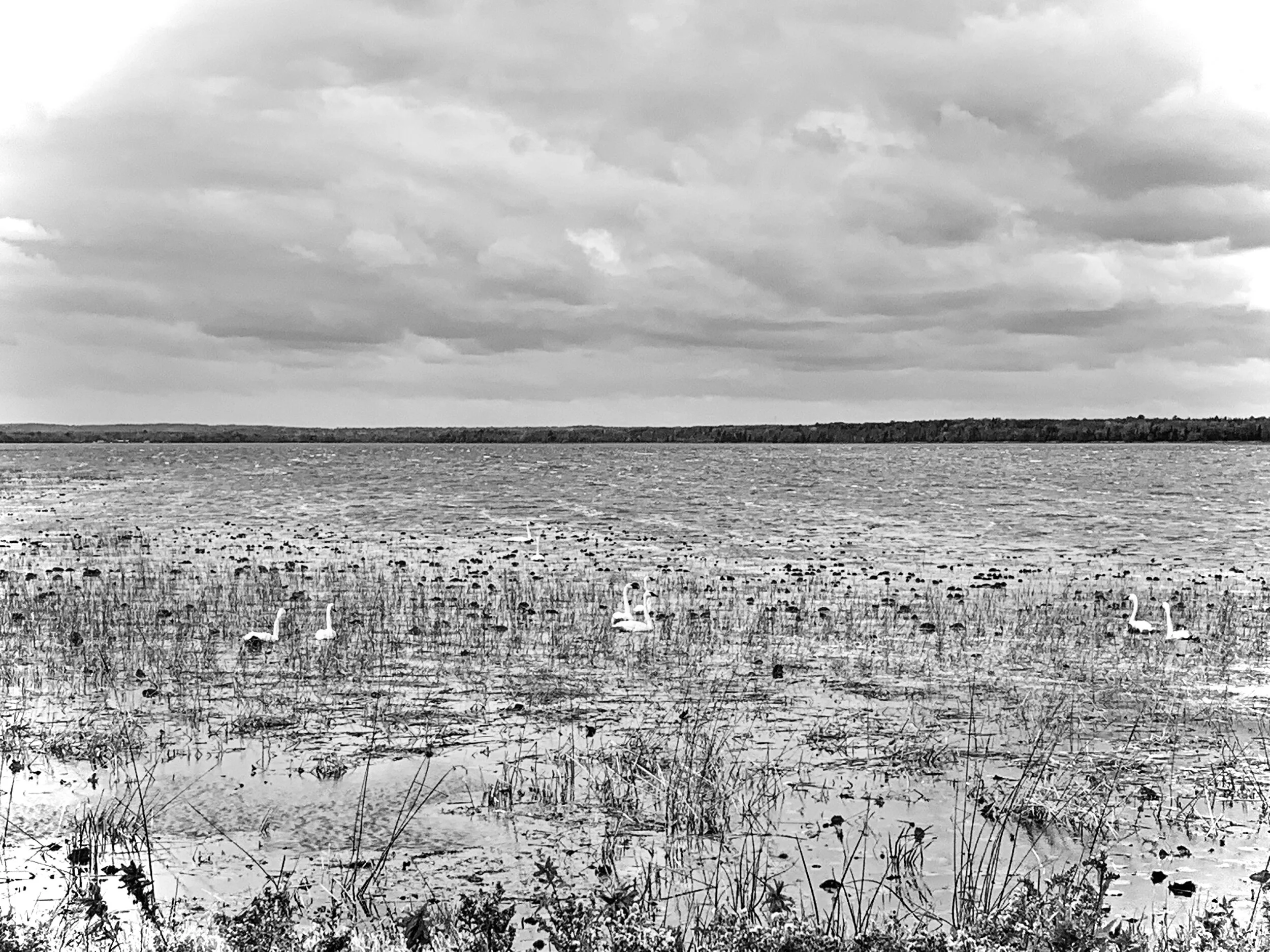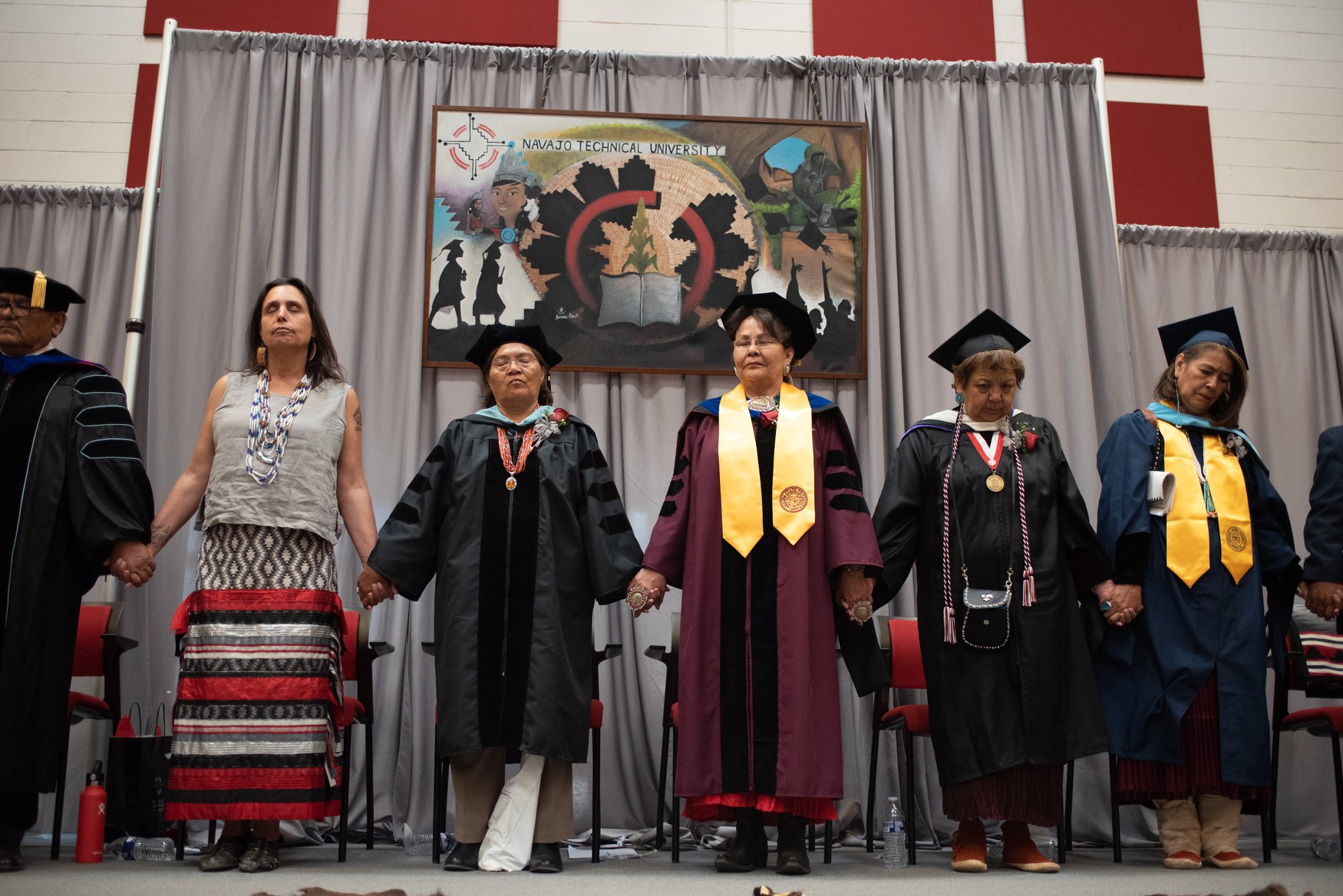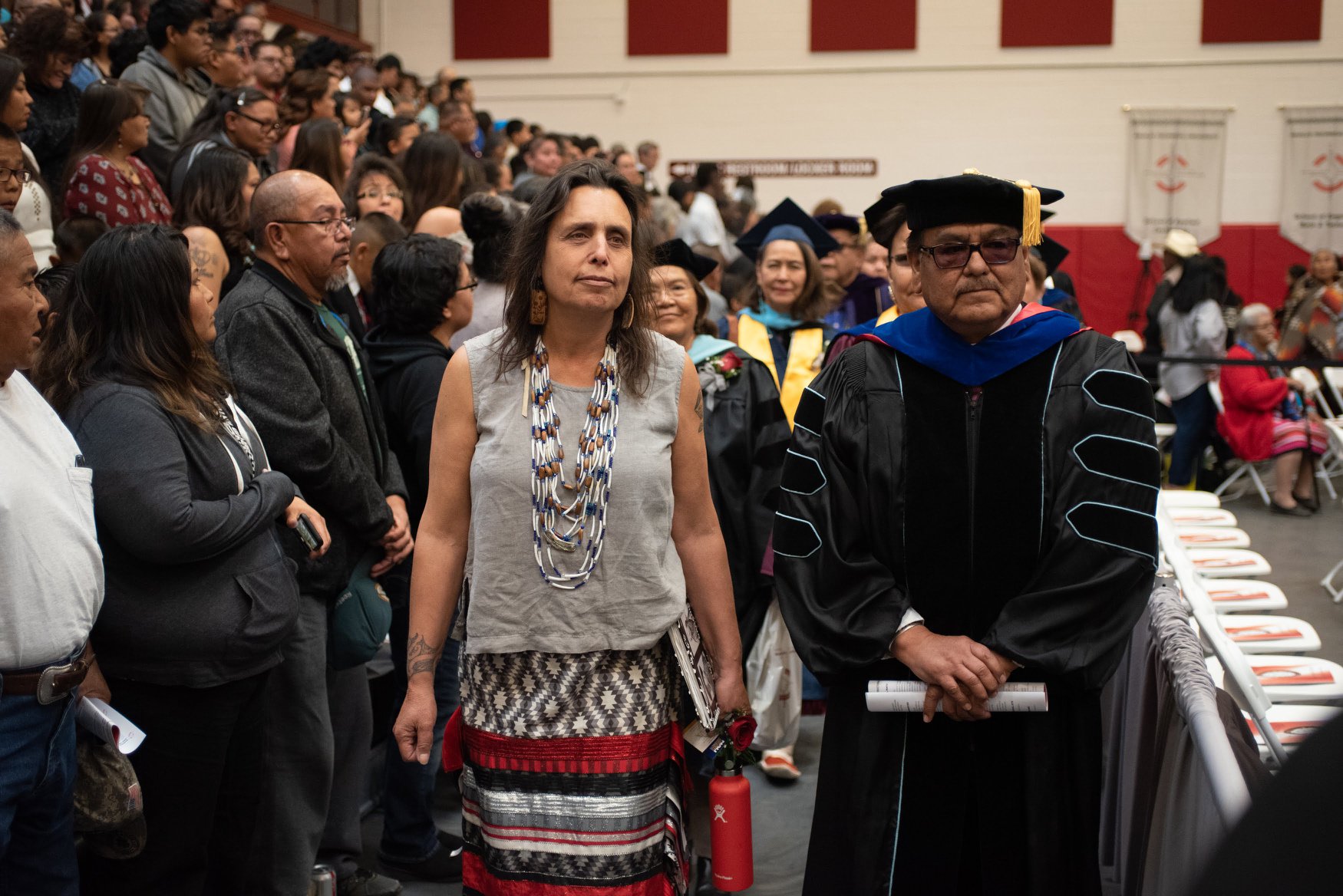Amid Blackout, a California Tribal Village Kept Lights On With Solar Energy by Winona LaDuke
Energy leadership is coming from Native people. A Deal With Future Generations
Building renewable energy projects is about more than just post-fossil fuel economics. It’s about the future of electrification in this country. Think of it this way: This past month, Pacific Gas and Electric, northern California’s largest northern utility, blacked out 500,000 homes because of forest fires; last year’s Paradise Fire was actually caused by PG&E Lines. As fires raged, fanned by climate change and poor infrastructure, there were still lights on at the Blue Lake Rancheria, a Wiyot, Yurok and Hupa village near Eureka, California – with a megawatt of solar and a battery backup system.
The last tar sands pipeline by Winona LaDuke
In early June, I traveled to Enbridge’s Shareholder meeting in Calgary, in Alberta Canada. Outside, laid off oil workers screamed, “Build that Pipe” over a bullhorn, and asked people to honk if they supported Canadian oil. Those tar sands workers will likely never have jobs in the industry again – economists, and even the oil fairy government of Alberta, are sobering up to the Boom Bust economy of energy projects. It’s the bust and there is no boom in sight. That’s the problem. It’s really a race to the bottom and to the end – that is to be the last tar sands pipeline. For the past four years Canada has been trying to run tar sands pipelines through the US, to the Coast, to anywhere, and it has not gone well. And it’s not going to, and here are the reasons why ...
The stars, G5 cell towers, and electromagnetic radiation exposure by Winona LaDuke
We need to rethink just blindly adopting technology for convenience. If we want this new faster connection, what we may want is more expensive but less damaging: a fiber optic system to wires (even faster), not waves going through living bodies. It’s ok for machines but not biology.
“In 2012, the General Accountability Office found that the existing standards may not reflect current knowledge and recommended that the FCC formally reassess its standards. The FCC’s standards address only one aspect of potential harm from electromagnetic radiation – heat. The current standards do not address other ways in which exposure to increasing electromagnetic radiation from wireless communications can harm human health, as well as the natural systems around us on which all life depends.” (5G and the FCC: 10 Reasons Why You Should Care by Sharon Buccino. 2019)
The concern is a risk of cancer, particularly in heart and brain cells, according to the National Toxicology Program in a 2018 study. I think that most of us know that intuitively you cannot get zapped continuously without consequence. I think that Genie should stay in the bottle for a few years. While you can no longer see the stars in many places, where I live they are clearly in sight. They remind me of my ancestors, the air, and the navigation tools needed for the time ahead.
Navajo Technical University confers first honorary doctoral degree to John Pinto
Navajo Technical University confers first honorary doctoral degree to John Pinto
CROWNPOINT — When recapping his six year journey to earn a bachelor's degree at Navajo Technical University, Darrick Lee called the experience a "privilege."
Graduates heard an inspiring speech by Winona LaDuke, an internationally renowned activist for the environment and for social justice.
LaDuke is Anishinaabe and executive director of Honor the Earth, an organization she co-founded with Amy Ray and Emily Salier of the music group, Indigo Girls.
In her remarks, she reflected on the energy transition the Navajo Nation faces and how the graduates will take the lead in developing that change, including investment in solar and wind projects.
"No time like the present to rebuild your energy economy," she said.
She said now is the time to end the injustice done by energy developers to Native peoples, including using the land to produce energy for urban populations while nearby households remain without electricity.
"Your nation will be a leader in this. I see this and know this. We are all counting on you to do the right thing," LaDuke said.
Noel Lyn Smith covers the Navajo Nation for The Daily Times. She can be reached at 505-564-4636 or by email at nsmith@daily-times.com.
What is it about that Lateral Oppression?
The Last Minnesota Indian Conflict - Interesting history connected to Round Lake
The Last Minnesota Indian Conflict: Through the hard work of Skip-in-the-Day and other Ojibwe Leaders and warriors, a Pine Point merchant, and other honest people this fraud was revealed. The Band received the correct payment and corrections in the dead and down pine policy were made. This ended the conflict at Round Lake, but not the conflicts coming at the White Earth Band of Ojibwe. For the next big manipulation came with trying to “Open up the Reservation.”









